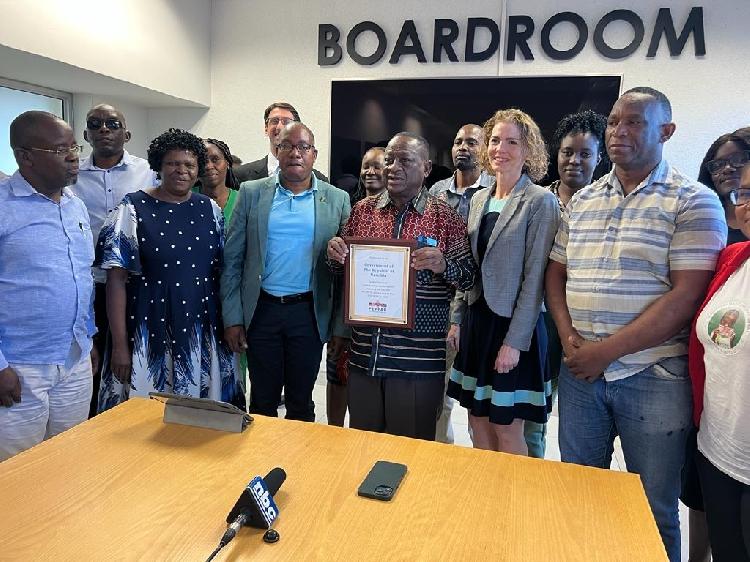Africa-Press – Namibia. 7 193 children under-15 living with the virus
ABOUT 99% of the estimated 215 348 Namibians living with human immunodeficiency virus (HIV) are receiving HIV therapy, health minister Kalumbi Shangula has said.
Shangula said the latest HIV prevalence rate among adults aged 15-49 years is 11,8%, while an estimated 7 193 children under-15 years are living with HIV.
The minister said this during the announcement of Namibia’s success in achieving 92-99-94% of the United Nations Programme on HIV and acquired immunodeficiency syndrome (AIDS) 95-95-95 targets on Saturday.
Therefore, among the estimated people living with HIV, 92% are aware of their HIV status, 99% are on anti-retroviral therapy while 94% are virally suppressed.
Seven regions are reported to have higher HIV prevalence rates in the country than others, with Zambezi region leading at 21,6%, Oshikoto (17,1%), Omusati (15%), Kavango East (14,7%), Kavango West (14,7%), Oshana (14,5%) and Ohangwena (14,3%).
HIV prevalence is lowest in Kunene at 7,1% and Omaheke at 7,3%.
“The number of HIV infections is disproportionately higher among females compared to their male counterparts. The prevalence is higher among women at 15,1% compared to 8,4% in men,” Shangula said.
The minister said while Namibia has surpassed the second 95% and is close to achieving the first and third 95% targets, the fight against HIV is not over.
He said new HIV infections in children, adolescents, young women and men, and key vulnerable and priority populations are still being recorded.
“Some of the known factors contributing to new HIV infections are limited access to preventive and treatment services, gender-based violence, unemployment among young people that is making them vulnerable to engaging in transactional sex, alcohol and drug abuse,” Shangula said.
Therefore, Shangula said, economic empowerment of the youth and women, substance abuse prevention and rehabilitation, expanding and decentralising HIV/AIDS services, and addressing gender-based violence are key to the country’s national response.
FIGHTING STIGMA
Meanwhile, Namibia marked Zero Discrimination Day last week on Wednesday, where justice minister Yvonne Dausab said more needs to be done to reduce stigma attached to people with HIV/AIDS.
Dausab said the stigma and discrimination that people with HIV face is often from their peers, family members, neighbours, healthcare providers, work colleagues and law enforcement officers.
Addressing stigma as a pervasive ideology may be achieved by adopting a legal framework that supports the equal treatment of HIV-positive persons and those living with AIDS, Dausab said.
“Fear of stigmatisation prevents many people with HIV or AIDS from taking action, whether legal or otherwise, to address the wrongs that they have suffered as a result of HIV infection. The question that remains is how we can utilise the law as a tool to prevent further prejudice and enhance social justice for all,” she said.
She said legal routes or rights-based approaches must be explored rigorously, adding that despite the possibilities available to communities, and the dire need for legal action, little has been done to sufficiently explore the law’s potential in fighting stigma and discrimination.
“By identifying trends of human rights violations in the community through investigation of the types of cases, this process could lead to test case litigation, if appropriate and other administrative tribunals if required,” Dausab said
For More News And Analysis About Namibia Follow Africa-Press






